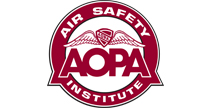Emergency landing near baseball field caught on tape
On July 31, 2003, the pilot of a Cessna 207 Skywagon made a forced landing at a sports complex in Anchorage, Alaska, after his engine quit at 800 feet agl. The pilot believed he took off with a full right tank—sufficient fuel to reach his destination—and therefore never bothered to switch to the full left tank, even after the engine stopped running. The aircraft cartwheeled during the rough landing, injuring two of the four people on board. A camera crew at the nearby baseball stadium recorded the entire event, a video clip that has been viewed several million times on the Internet.
The flight departed Beluga Airport in Tyonek, Alaska, at 7:45 p.m. Approximately half an hour later, the Skywagon was approaching Anchorage, with a planned landing at Merrill Field Airport. About 800 feet above the city, the engine began to run rough. In an attempt to restore engine power, the pilot confirmed that the fuel selector valve was placed to the right fuel tank and momentarily switched the auxiliary fuel pump to the high boost position. The engine came back to life briefly, then fell silent.
Surrounded by buildings, the pilot saw hope: a sports complex with six flat, well-groomed playing fields. He maneuvered for the forced landing—only to discover all six fields were occupied. As the aircraft touched down between a minor league baseball stadium and a soccer field, the Skywagon’s left wing collided with a chain link fence, causing it to strike a concrete embankment and cartwheel to the left.
During the collision, the engine assembly was torn from the airplane, causing a brief flash fire. The outboard portion of the left wing was severed. Despite the substantial damage, the pilot and one of the passengers walked away uninjured. The other two passengers, while hurt in the crash, escaped major injury. No one on the ground was hurt.
NTSB examiners discovered that the Skywagon’s right fuel tank was essentially dry. The left tank, however, yielded 30 gallons of perfectly good avgas. The pilot reported that he routinely flew the accident route using only the right tank, with the left tank considered reserve. Another pilot had flown the accident airplane prior to the Anchorage flight, and typically line service personnel would fill the right fuel tank prior to the next flight.
The pilot admitted that he did not visually check the fuel quantity in the right tank before departing. When asked if he attempted to switch the fuel selector valve from the right tank to the left at any point in the flight, the pilot responded “no.”
The NTSB determined that the accident was caused by the pilot’s incorrect positioning of the fuel tank selector valve to a nearly empty tank, which resulted in a loss of engine power due to fuel starvation, and subsequent emergency landing at an off-airport site. Factors associated with the accident were the pilot’s inadequate preflight inspection and his inadequate remedial action.
The pilot managed to pull off an emergency landing in an urban environment without major injury to the aircraft occupants or the hundreds of bystanders assembled on the playing fields. No small task, to be certain. But the potential for catastrophe was huge for such an easily preventable accident. Pilots shouldn’t allow routine to breed complacency. We should check and double check, no matter how sure we are of the outcome. Assumptions during preflight or when troubleshooting a sputtering engine could easily be our undoing, just as the “unloaded” gun tends to be the most dangerous.
Related Links
Fuel Management Pilot Safety Announcement video clip
Interactive Fuel Management Accident Map
“Do The Right Thing: Decision Making for Pilots” interactive course
 Making assumptions in daily life can be a tricky practice. Making assumptions in aviation can be downright dangerous. That’s why pilots have checklists. That’s why we preflight the airplane thoroughly. That’s why we always confirm that the fuel truck made the visit we assumed it made. Except when we don’t—and end up reluctant YouTube stars.
Making assumptions in daily life can be a tricky practice. Making assumptions in aviation can be downright dangerous. That’s why pilots have checklists. That’s why we preflight the airplane thoroughly. That’s why we always confirm that the fuel truck made the visit we assumed it made. Except when we don’t—and end up reluctant YouTube stars.
Accident Video:
This accident was caught on tape by a crew filming the minor league baseball game. Watch the two-minute YouTube video.